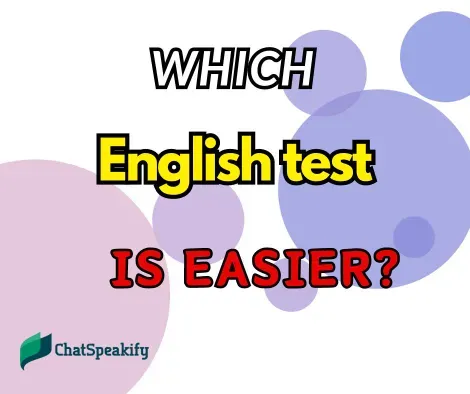Determining which English proficiency test is “easier” can be subjective and largely depends on your individual strengths, studying habits, and test-taking preferences. However, I’ll provide a comparison of some of the most popular English tests to help you make an informed decision.
Major English Proficiency Tests
IELTS (International English Language Testing System)
TOEFL (Test of English as a Foreign Language)
PTE (Pearson Test of English)
Cambridge Exams (FCE, CAE, CPE)
Duolingo English Test
IELTS (International English Language Testing System)
Format: Four sections: Listening, Reading, Writing, and Speaking.
Pros:
Known for having more conversational listening and speaking components.
Speaking test is conducted face-to-face, which some test-takers find less intimidating.
Cons:
Writing tasks can be challenging and require comprehensive essay-writing skills.
Reading passages can be lengthy and complex.
TOEFL (Test of English as a Foreign Language)
Format: Four sections - Reading, Listening, Speaking, and Writing.
Pros:
All sections are completed on a computer.
Integrated tasks require combining listening, reading, and speaking/writing skills, which might suit those strong in multiple skills simultaneously.
Cons:
Speaking section is recorded and may feel impersonal to some.
Requires familiarity with an American accent.
PTE (Pearson Test of English)
Format: Three sections - Speaking & Writing, Reading, and Listening.
Pros:
Computer-based with automated scoring.
Tasks are varied and shorter, potentially reducing fatigue.
Cons:
Automated scoring can feel less personal and may not accommodate nuanced speaking skills.
Speed and reaction time can significantly influence scores.
Cambridge Exams (FCE, CAE, CPE)
Format: Several levels targeting different proficiencies - FCE (B2), CAE (C1), CPE (C2).
Pros:
Detailed feedback and clear structure.
Results are recognized and valid for life.
Cons:
Exams are paper-based, which may not suit all students.
More traditional and might require comprehensive grammar knowledge.
Duolingo English Test
Format: Four sections - Speaking, Writing, Reading, and Listening.
Pros:
Affordable and can be taken at home.
Shorter test duration (about an hour).
Cons:
Relatively new, and not accepted by all institutions.
May not be as rigorous as other tests, though still comprehensive.
Personal Anecdotes and Tips
When I prepared for the IELTS, I appreciated the face-to-face interaction during the speaking test. However, I found the writing section particularly challenging due to the need for well-structured essays within a limited timeframe.
On the other hand, a friend of mine excelled in the TOEFL thanks to her strong typing skills and comfort with American accents but found the integrated tasks exhausting.
How to Choose the Best Test for You
Identify your strengths and weaknesses: Are you better at writing essays or answering multiple-choice questions? Do you prefer face-to-face interactions or are you comfortable speaking to a computer?
Consider the format: If you prefer computer-based tests, TOEFL or PTE might be better. If you find speaking to an examiner more natural, consider IELTS.
Institution requirements: Ensure the test you choose is accepted by the institutions or organizations you’re applying to.
Practice: Take practice tests of each type to see which one you perform better on.
Conclusion
Ultimately, no test is universally easier than the others; it depends on your personal preferences and strengths. My advice is to analyze the formats and your abilities carefully, take practice tests if possible, and choose the one aligned with your skills and comfort zones. Happy studying, and best of luck!
